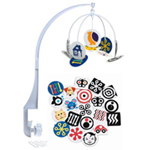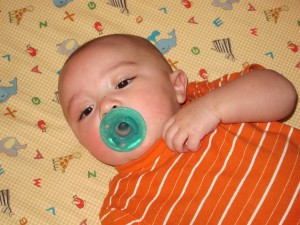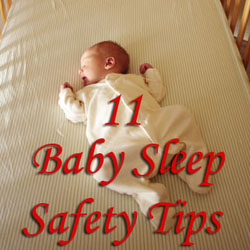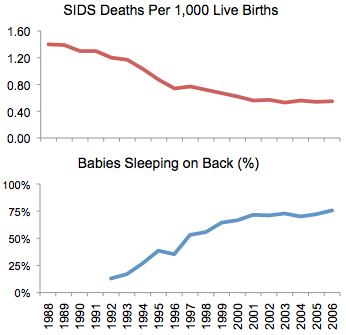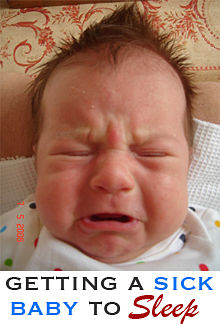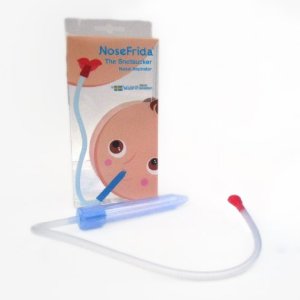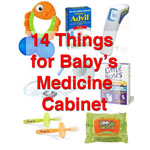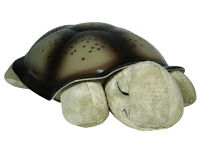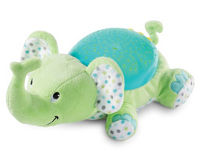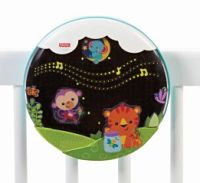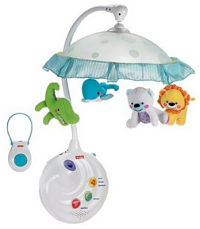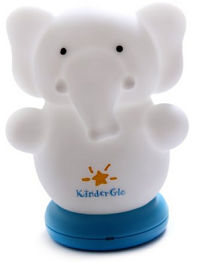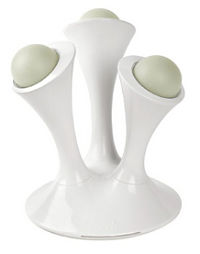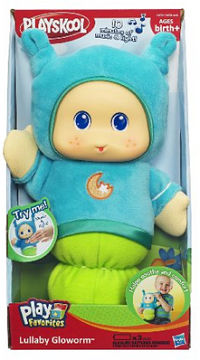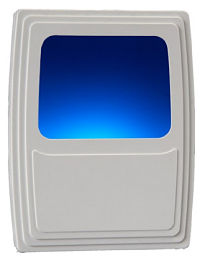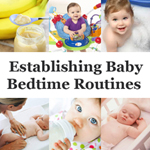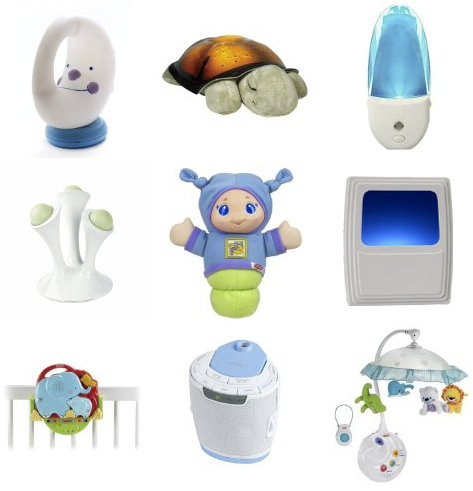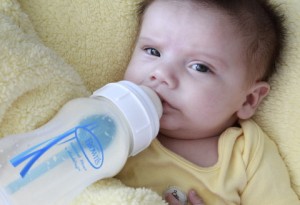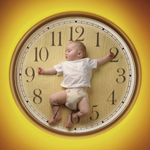 Co-sleeping is a practice where a baby sleeps close to one or both parents at night, instead of in a crib in his or her own room. This is a fairly common practice, and there are different subsets of it. What are the benefits? What are the risks?
Co-sleeping is a practice where a baby sleeps close to one or both parents at night, instead of in a crib in his or her own room. This is a fairly common practice, and there are different subsets of it. What are the benefits? What are the risks?
Parents usually have a reason to start co-sleeping. Whether or not you should stop, and how to make the transition, are hard questions to answer. I’m here to help.
Contents:
Types of Co-sleeping
Benefits of Co-sleeping
Co-sleeping and SIDS
Other Risks of Co-sleeping
How to Stop Co-sleeping
Types of Co-sleeping
Cosleeping is a broad category in which the baby sleeps close to one or both parents. There are a few different subtypes of this:
- Room sharing, in which the baby sleeps in a crib or bassinet in the parents’ room.
- Bed sharing, where the baby sleeps in bed with parents at night.
- Co-bedding, for families with multiples, is when twins share the same crib to sleep for naps and/or for the night.
As a father of twins, I must admit that I’ve done all three of these at some point or another. We have a small crib in our room (room sharing). On rare occasion we’ve picked up a twin who was crying in their room, and let him sleep in bed with us (bed sharing). A few times when they were newborns we’ve put both boys to sleep in the same crib or pack-n-play (co bedding).
Benefits of Co-sleeping
There’s a reason that cosleeping is a common practice: parents find one or more benefits to it. These might be simple economic realities. Extra rooms and baby beds cost money, and some other expenses (diapers, formula) have higher priority. In the case of room-sharing, the American Academy of Pediatrics actually recommends it for babies because it lets parents more closely monitor their infant while he’s sleeping. Convenience is another benefit of cosleeping; when your newborn wakes up every three to four hours, and you’re exhausted, it’s tempting to keep him close by, especially at night.
One of the most common justifications I hear is, “My baby only sleeps if one of us is holding her, or if she’s in bed with us. And I’ve got to get some sleep!” I’m very sympathetic to the parents who admit this. Sometimes you have to do what’s necessary to get your baby to sleep so you can get some shuteye of your own. However, this is something you can work on by establishing a sleep routine for your baby, and there are definite reasons to try to stop co-sleeping with baby in your bed.
Co-sleeping and SIDS
The American Academy of Pediatrics released updated baby sleep safety guidelines in late 2011. Among these are some specific points related to co sleeping. Basically, it is recommended that you sleep in the same room but not the same bed as your baby. There is substantial evidence that this practice (room sharing but not bed sharing) decreases the risk of SIDS by up to 50%.
Infants may be brought into the parents’ bed for feeding or comfort, but should be returned to their crib or bassinet to sleep. This helps prevent suffocation, strangulation, and entrapment that could occur in the parents’ bed. Devices that claim to make bed sharing more safe are not recommended. The AAP recommends against bed sharing flat-out, but the most dangerous practices of it are:
- Bed sharing with infants younger than 3 months of age.
- Bed sharing with a current smoker, even if he/she does not smoke while in bed.
- Bed-sharing with someone who is excessively tired, taking medication, or has used drugs or alcohol
- Bed-sharing with anyone who is not a parent, including other children
- Bed-sharing on a soft surface (water bed, old mattress, sofa, armchair, etc.).
- Bed-sharing on any surface with loose soft bedding, such as pillows, quilts, and comforters.
You should try to avoid bed sharing altogether, but the above practices especially.
Should Twins Share A Bed?
The issue of bed sharing with twins is a contentious one. Some argue that twins should sleep in the same bed to encourage their co-development and comfort one another. Others might do this for practical reasons; it takes extra space and extra money to buy a second twin when you’re having twins.
My twin boys share a room but sleep in separate cribs, which seems like a good compromise. The older one is a couple of pounds heavier, and we didn’t want him rolling on top of his brother (or waking him up) on accident. This way, they can see and babble at one another and still have a safe place of their own to sleep in.
You might think “Oh, I’ll never have to worry about this,” but here’s a little statistic for you. The chances of having twins are around 3% with each pregnancy. It could happen to you!
Other Risks of Co-sleeping
There are some disadvantages to cosleeping, even the recommended and safe practice of having your baby sleep in his own crib or bassinet in your room.
- Although your presence is probably a comfort, your baby might have trouble sleeping if he sees you or hears you moving around. Sources of loud irregular noise, such as cell phones, alarm clocks, televisions, and radios, are likely to wake babies up if they’re in your room.
- Having the baby in your room (or worse, your bed) can prevent you from sleeping. Parents are programmed to respond when a baby moves, coughs, or makes any irregular noise. Also, you might be tempted to respond too quickly if your baby does wake up. A significant fraction of the time that my babies have woken up and fussed, they go back to sleep on their own within a minute or two.
- This might be a minor point, but cribs and bassinets take up a lot of space in your bedroom, and they’re notorious for causing stubbed toes and cracked shins for parents late at night.
How to Stop Co-sleeping (Bed sharing)
So, you’re co sleeping, and not the good doctor-recommended kind? Don’t feel too badly about it – there are reasons why so many parents find themselves bed sharing. Here are some strategies you can use to transition to safer sleep routines for your baby.
- Don’t make bed sharing a habit! Occasional cosleeping is much easier to fix. If part of your baby’s nighttime sleeping routine is falling asleep in your arms or while snuggling you, that’s a hard precedent to break.
- Put your baby to bed before he or she falls asleep. Babies need to learn to fall asleep by themselves while laying (on their backs) in their own cribs.
- Be strong. I feel a powerful urge to run to the rescue whenever I hear one of my babies cry, and I’m sure you feel the same way. This transition period will almost certainly involve some crying. Let your baby fuss for five minutes or so before going in to comfort him or her.
- Start slow. Don’t go cold-turkey on breaking your cosleeping habit, or you could be in for a stretch of sleepless nights. Instead, try it one night out of four and increase the frequency over time.
- Think about the benefits. Moving the baby out of your bed is a win for everyone. For the little ones, it’s a safer night’s sleep. For the parents, it’s so much more freedom. You can do what you want, when you want, and sprawl however you want, when your baby is in his own bed. You’ll probably get more sleep, and better sleep, without fear of rolling over on top of him. Keep these benefits in mind, and you’ll stay motivated to do the right thing.
You don’t have to go cold turkey. You can invest in a mini crib or bassinet and put them right next to your bed. That way you get all of the benefits but your baby gets to sleep in his or her own little space. There are even special safe co-sleeping cribs to help this transition.
What To Read Next
If you like this article, you might want to subscribe by e-mail or RSS so that you’re notified when new content is posted.
 |
 |
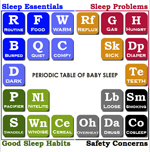 |
 |
| Best Baby Pacifiers has our recommendations for newborns, older babies, and teething infants. | Baby sleep problems takes you through the most common sleep issues and how to address them. | The periodic table of baby sleep has all the essential elements for healthy baby sleep habits. | Visit our sleep training section for strategies and tips for teaching your baby to sleep through the night. |





